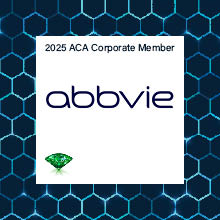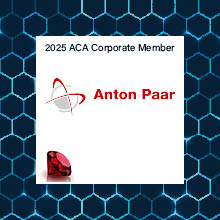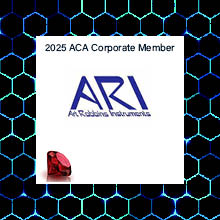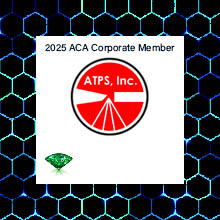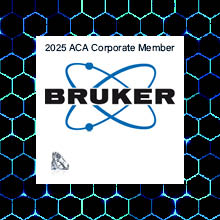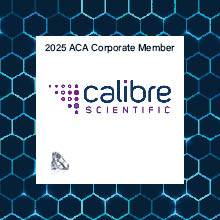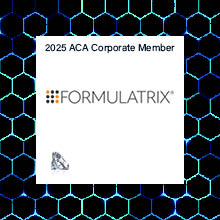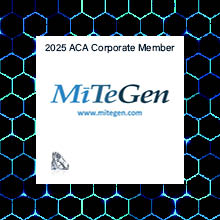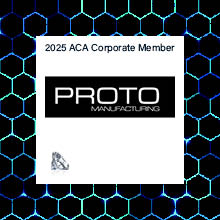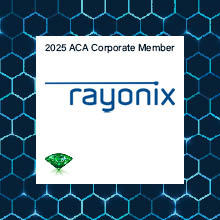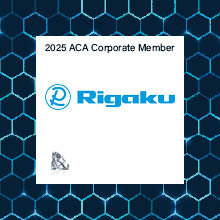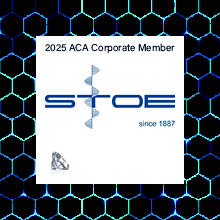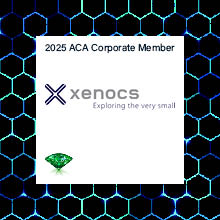- Home
- About ACA
- Publications & Resources
- Programs
- Annual Meeting
- Membership
- ACA History Center
- Media Archive
David G. Rognlie Award: Majed Chergui (EPFL, Lausanne)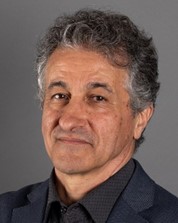 May 30, 2023Written with the assistance of the nomination packet of George N. Phillips, Jr., Ph.D. May 30, 2023Written with the assistance of the nomination packet of George N. Phillips, Jr., Ph.D.
The ACA Rognlie award is bestowed to a deserving individual, at any stage of their career, for an exceptional discovery or technical development of particularly high impact in any area of structural science. Professor Majed Chergui pioneered time-resolved X-ray absorption spectroscopy (XANES and EXAFS) at synchrotrons (SRs) opening the way to structural studies of chemical systems subject to an external perturbation (e.g. a pulse of light or a laser T-jump). This has been a tremendous contribution to atomic and molecular science in general, as well a critical part of interpreting structural studies. Back in the mid-1990s, he started developing the methodology for time-resolved X-ray absorption spectroscopy, which consisted in: a) demonstrating the selective recording of specific X- ray pulses from the typically MHz multibunch pulse train of SRs, e.g. recording at 1 kHz, using electronic gating; b) implementing the synchronization of lasers and synchrotrons slaving the former to the RF clock of the later.1–4 Since the lasers run at 1 kHz, these developments paved the way to time-resolved X-ray absorption spectroscopy (XAS) of solution phase systems; c) implementing a data acquisition scheme recording the X-ray pulses on a pulse-to-pulse basis, so that the X-ray transmission through the sample is recorded in sequence at twice the repetition rate of the laser, once for the unexcited and once for the excited sample. This avoids any changes due to long-term drifts of the signal. Using this scheme, Chergui and co-workers reported the first time-resolved XAS experiment with 50-100 picosecond (ps) time resolution in 2003.5 This scheme was adopted at SRs worldwide and lead to a surge of ps-XAS studies, which is still going on to this day. With the marketing of laser sources running at MHz repetition rate towards the end of the 2000s, Chergui and his team implemented a high repetition rate data acquisition scheme with the laser running at half the repetition rate of the SR, thus leading to a 1000-fold increase in average photon flux.6 This scheme has now been adopted worldwide at SRs for ps-XAS experiments. Finally, more recently, he extended the methodology to non-photodriven reaction by demonstrating picosecond and nanosecond laser T-jump/XAS experiments.7 When femtosecond duration X-ray pulses became available at SRs, thanks to the slicing scheme, Chergui and co-workers implemented it to perform the first ever femtosecond XANES experiment on a liquid phase system.8 This paper marks the birth of ultrafast X-ray structural spectroscopy, while it also represented a scientific breakthrough in the study of spin-cross-over metal complexes, which undergo dramatic spin changes upon light excitation. In summary, these achievements represented the birth of time-resolved XANES and EXAFS in the picosecond to femtosecond time domains. M. Chergui’s achievements are a source of inspiration to a whole generation of physical chemists working on chemical, biological and nano systems, carrying over to many applications after the launch of X-ray Free Electron Lasers at the beginning of the 2010s. Prof. Chergui’s CV comprises a long and distinguished list of award, accolades, and evidence of strong community service. Prof. Chergui’s research achievements have been recognised, among others, by the 2013 Edward Stern award of the International X-ray absorption spectroscopy, the Earle K. Plyler Award 2020) of the American Physical Society, the Liversidge Award 2019 of the Royal Society of Chemistry (UK) and the A. H. Zewail Award in Ultrafast Science and Technology 2021 of the American Chemical Society. Other significant contributions include Prof. Chergui’s efforts as the founding Editor-in-Chief (2015-2021) of the journal Structural Dynamics, a joint publication of our ACA and the American Institute of Physics. The guided the journal from its initial phases to a successful on-line open access journal serving a broad range of structural scientists. He is also highly sought as a guest-editor or editorial board members for numerous high profile journals. Prof. Chergui has also contributed to a long list of advisory boards and conference leadership positions and lectures around the world. Finally, Prof. Chergui is producing an impressive legacy of academic work, including scores of mentees and former students. His work is cited over 1,000 time per year (google scholar). He is a truly international contributor to science and is well deserving of the ACA’s David J. Rognlie Award. (1) Bressler, C.; Chergui, M.; Pattison, P.; Wulff, M.; Filipponi, A.; Abela, R. A Laser and Synchrotron Radiation Pump-Probe X-Ray Absorption Experiment with Sub-Ns Resolution. Proceedings of SPIE 1998, 3451, 108–116. (2) Bressler, C.; Saes, M.; Chergui, M.; Abela, R.; Pattison, P. Optimizing a Time- Resolved X-Ray Absorption Experiment. Nucl Instrum Meth A 2001, 467, 1444–1446. (3) Saes, M.; van Mourik, F.; Gawelda, W.; Kaiser, M.; Chergui, M.; Bressler, C.; Grolimund, D.; Abela, R.; Glover, T. E.; Heimann, P. A.; Schoenlein, R. W.; Johnson, S. L.; Lindenberg, A. M.; Falcone, R. W. A Setup for Ultrafast Time-Resolved x-Ray Absorption Spectroscopy. Review of Scientific Instruments 2003, 75 (1), 24–30. https://doi.org/10.1063/1.1633003. (4) Gawelda, W.; Bressler, C.; Saes, M.; Kaiser, M.; Tarnovsky, A. N.; Grolimund, D.; Johnson, S. L.; Abela, R.; Chergui, M. Picosecond Time-Resolved X-Ray Absorption Spectroscopy of Solvated Organometallic Complexes. Phys Scripta 2005, T115, 102–106. (5) Saes, M.; Bressler, C.; Abela, R.; Grolimund, D.; Johnson, S. L.; Heimann, P. A.; Chergui, M. Observing Photochemical Transients by Ultrafast X-Ray Absorption Spectroscopy. Phys. Rev. Lett. 2003, 90 (4), 047403. https://doi.org/10.1103/PhysRevLett.90.047403. (6) Lima, F. A.; Milne, C. J.; Amarasinghe, D. C. V.; Rittmann-Frank, M. H.; van der Veen, R. M.; Reinhard, M.; Pham, V. T.; Karlsson, S.; Johnson, S. L.; Grolimund, D.; Borca, C.; Huthwelker, T.; Janousch, M.; van Mourik, F.; Abela, R.; Chergui, M. A High-Repetition Rate Scheme for Synchrotron-Based Picosecond Laser Pump/x-Ray Probe Experiments on Chemical and Biological Systems in Solution. Rev Sci Instrum 2011, 82 (6). https://doi.org/10.1063/1.3600616. (7) Cannelli, O.; Bacellar, C.; Ingle, R.; Bohinc, R.; Kinschel, D.; Bauer, B.; Ferreira, D.; Grolimund, D.; Mancini, G.; Chergui, M. Toward Time-Resolved Laser T-Jump/X-Ray Probe Spectroscopy in Aqueous Solutions. Structural Dynamics 2019, 6 (6), 064303. (8) Bressler, C.; Milne, C.; Pham, V. T.; ElNahhas, A.; van der Veen, R. M.; Gawelda, W.; Johnson, S.; Beaud, P.; Grolimund, D.; Kaiser, M.; Borca, C. N.; Ingold, G.; Abela, R.; Chergui,
|
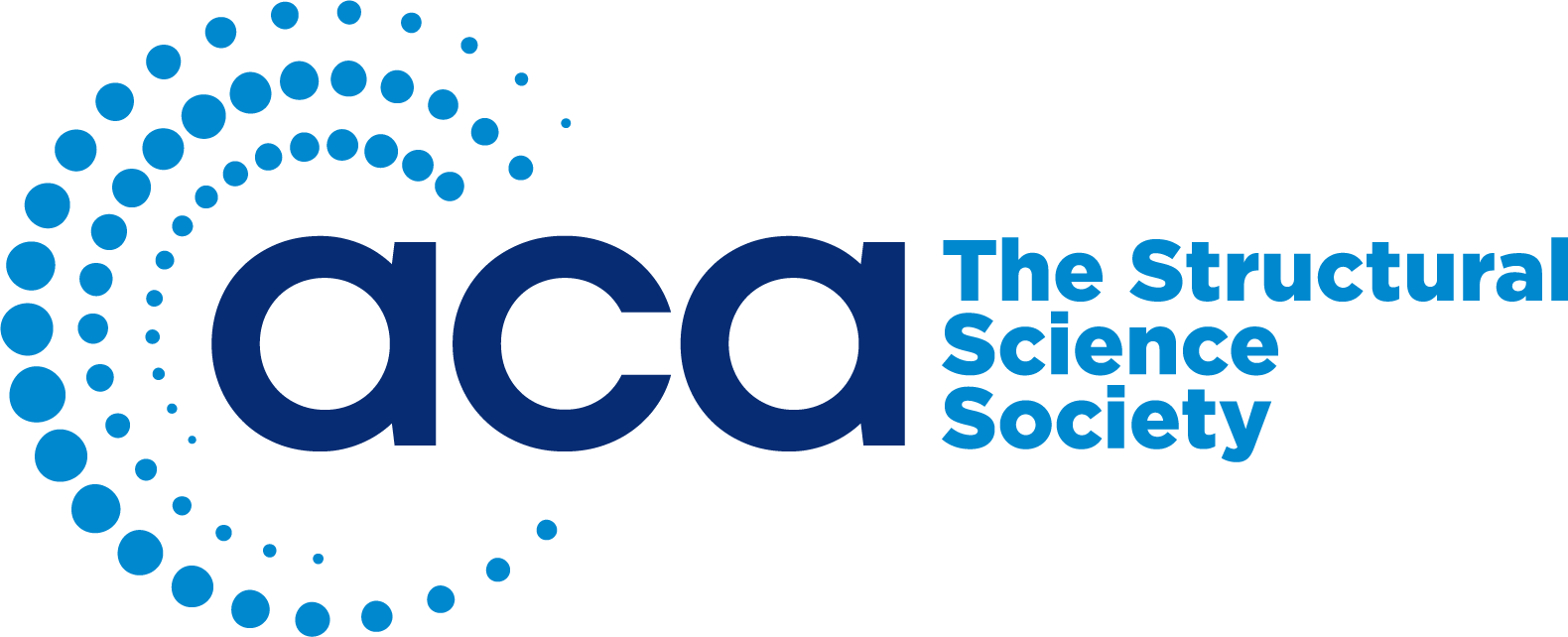
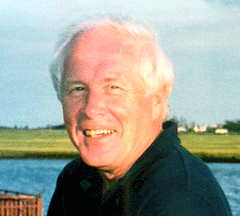 To read more about the incredible life and accomplishments of
To read more about the incredible life and accomplishments of 